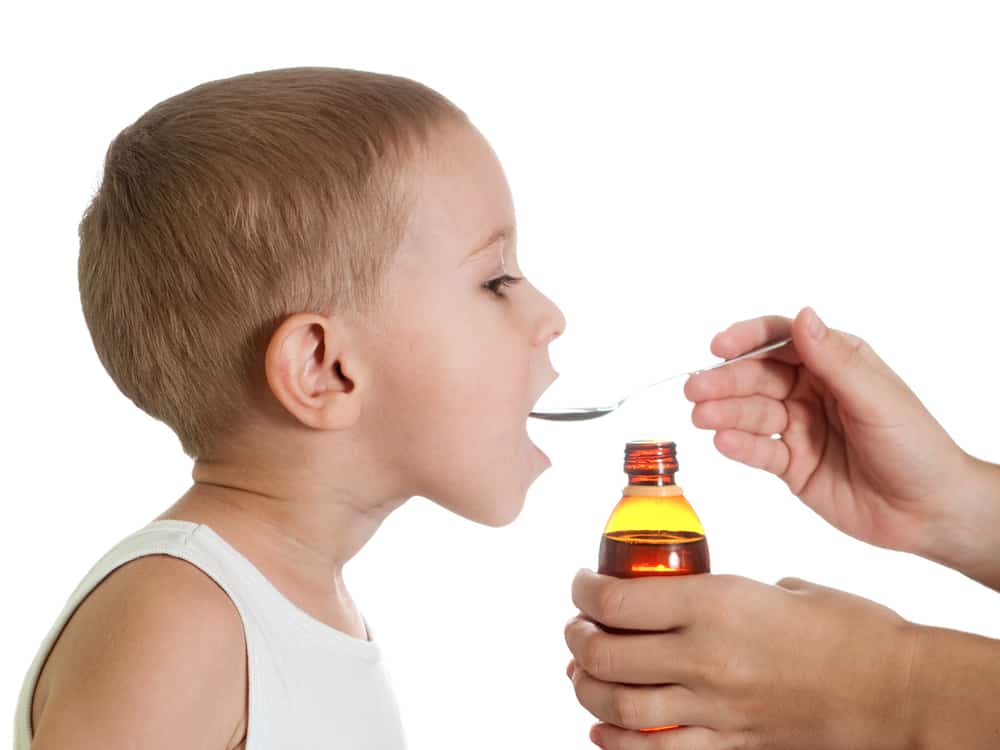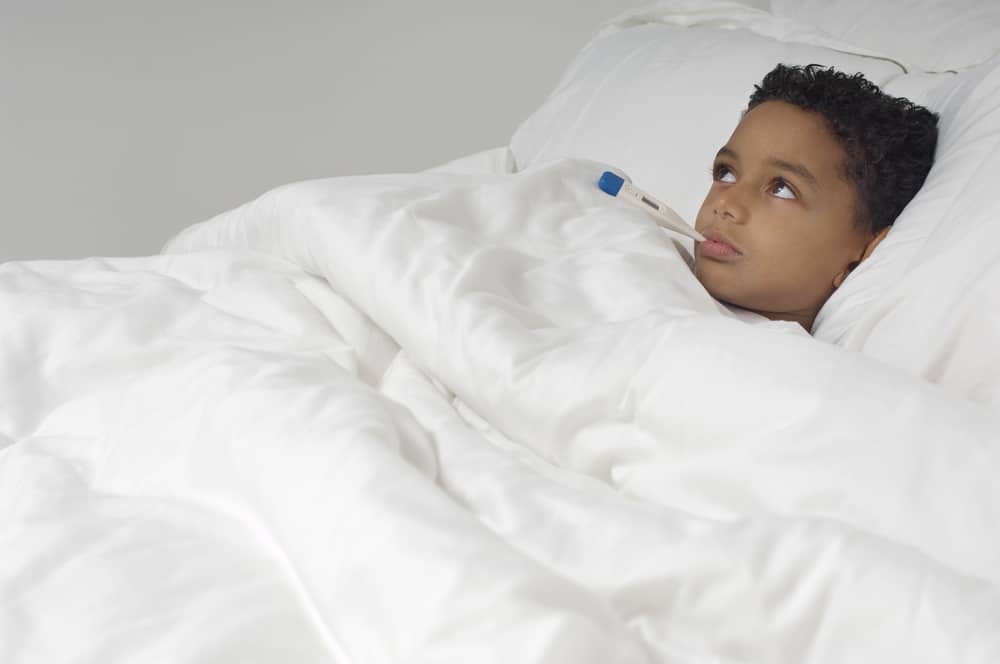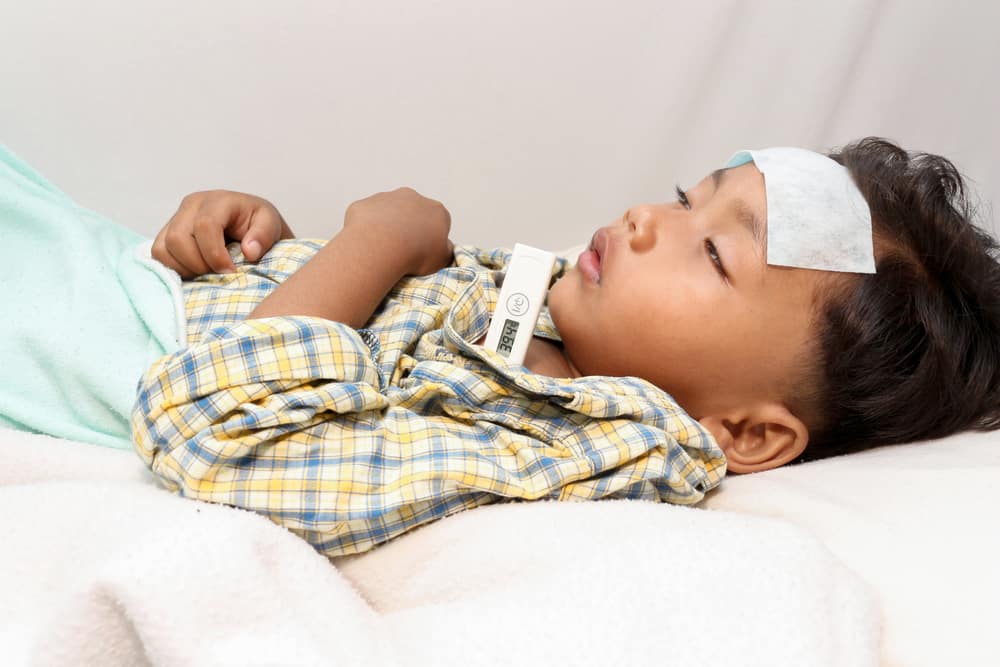Coughing. It’s not fun, and we usually just want to make it stop, however, coughing is one of the body’s miraculous ways of getting rid of things it knows shouldn’t be there. Especially in the lungs where air is supposed to be, coughing is the natural mechanism that works to ensure clear airways, so it’s important to distinguish between a cough the body needs to recover from illness and a cough that’s more damaging than beneficial. But how safe are cough syrups anyway? You’ve trusted Mamavation to uncover the latest information about multi-level marketing companies, a thorough inspection of 170 dog foods on the market, and the fact that ADHD and thyroid conditions are linked to fluoride in water. Now jump into the deep end with us as we look closer at the different types of cough treatments, the active ingredients and their functions, and the various OTC products on the market.
Disclosure: This post contains affiliate links.
Table of Contents
6 Types of Cough Treatments
Cough treatments mainly consist of methods of suppression and discharge of mucus from the lungs, and control of the cough reflex by reducing irritation of receptors in the throat. Treatments come in a range of complexities from the simple use of water all the way up to potentially hazardous pharmaceutical medicines that have long lists of negative side effects. Paying attention to your symptoms is critical because it can be tricky to distinguish between a beneficial cough and a damaging one. The general rule of thumb is that if your cough begins to cause muscle soreness in the torso, dizziness, headache or pain in your neck, it’s probably time to start looking for a cough treatment. Severe, long lasting coughs can cause some unbelievable problems including urinary or bowel incontinence, hemorrhoids, damage to the ribs and abdomen, petechial hemorrhaging, loss of consciousness, stroke, arrhythmia, decreased cardiac output and ruptured spleen. YIKES.
Overall, we recommend beginning treatment for the underlying issue of your cough before it becomes a major problem. This way, the illness causing the cough is remedied which eliminates the body’s need to utilize the coughing mechanism in the first place and prevents the progression to damage and delayed recovery.
For the specifics on methods of cough treatment, we simplified and summarized the cache of information we found in this article. These are the 6 different approaches, ranging from simple treatments that work on the surface of the throat to medication-based treatments that affect entire systems inside the body.
- demulcents are the most simple cough treatments and are generally effective right at the larynx and include drinking water, using a vaporizer, and eating lemon or honey to provide a coating on mucous membranes and cough receptors which helps prevent irritation in the throat and activation of the cough reflex.
- anesthetic cough drops and sprays contain medicines like benzocaine and lidocaine that numb cough receptors which prevents them from activating as often, however, there are notable side effects include numbness in the mouth and throat, stomach upset, diarrhea and loss of appetite.
- expectorants like guaifenesin are common medicines in cough treatments that break down mucus so it can be coughed out.
- antihistamines like diphenhydramine dry up mucus and expand the lung’s air passages, but have a notable side effect of drowsiness. Interestingly, the newer non-drowsy antihistamines don’t work well for coughs.
- sympathomimetic decongestants open nasal passages and reduce postnasal drip, but ingredients like phenylephrine and dextromethorphan in these medicines can cause upset stomach, insomnia, dizziness, lightheadedness, headache, nervousness, tremor or fast heartbeat. These medicines should not be used by those with hyperthyroidism, diabetes, cardiovascular disease of any kind, increased intraocular pressure, or an enlarged prostate.
- central suppressants address cough by pharmaceutical treatment and suppression of the central nervous system with ingredients like dextromethorphan. Notable side effects include constipation and drowsiness.
Cough Syrup Ingredients to Avoid
With many conventional cough syrups, there’s a high potential for negative side effects due to the presence of pharmaceutical medications. Many cough syrups carry warning labels for people on certain common medications including all MAOI drugs (for depression, psychiatric or emotional conditions, or Parkinson’s disease), as well as people with diabetes and the elderly. The truth is that these drugs are potentially dangerous for everyone, and have long lists of negative side effects compounded by multiple active pharmaceuticals and toxic added ingredients.
- dextromethorphan is one of the most commonly used active ingredients in conventional cough syrup and works by suppressing the cough reflex through a direct action on the cough center in the medulla of the brain. Side effects include confusion, constipation, headache, dizziness, drowsiness, nausea, vomiting and stomach pain. Toxic psychosis (hyperactivity, visual and auditory hallucinations) and serious respiratory depression have been reported after ingestion of 300 mg or more. Dextromethorphan should never be used by people with asthma, diabetes, hyperthyroidism, diabetes, cardiovascular disease of any kind, increased intraocular pressure, or an enlarged prostate.
- diphenhydramine is an antihistamine that can cause dizziness, blurred vision, drowsiness, insomnia, constipation, stomach upset, pounding heartbeats, painful or difficult urination, lack of urination, confusion, feeling like you might pass out, tightness in your neck or jaw, and uncontrollable movements of your tongue. Should not be used by women who are pregnant or breastfeeding.
- phenylephrine is a sympathomimetic decongestant that can cause upset stomach, insomnia, dizziness, lightheadedness, headache, nervousness, tremor or fast heartbeat. Phenylephrine should not be used by those with hyperthyroidism, diabetes, cardiovascular disease of any kind, increased intraocular pressure, or an enlarged prostate.
- doxylamine is an antihistamine that can cause central nervous system depression, dry mouth, blurred vision, constipation, dizziness, decreased sweating and difficulty urinating. Doxylamine should not be used by the elderly or people with asthma, glaucoma, enlarged prostate, cardiovascular disease, respiratory disease or thyroid dysfunction.
- chlorpheniramine is an antihistamine that can cause fast or uneven heart rate, mood changes, tremor, seizure (convulsions), easy bruising or bleeding, weakness, shortness of breath, little or no urinating, dizziness, drowsiness, dry mouth, nose, or throat, constipation, blurred vision, or feeling nervous or restless.
- guaifenesin is a common expectorant is relatively benign but should still be avoided whenever possible because of the potential of side effects that can include diarrhea, dizziness, headache and nausea.
- polyvinyl acetate is a synthetic resin prepared by the polymerization of vinyl acetate that serves as the film-forming ingredient in water-based (latex) paints, and is also is used in adhesives.
- sodium polystyrene sulfonate is derived from polystyrene and binds itself to potassium in the digestive tract. While not absorbed into the bloodstream, it can still cause dangerously low potassium and calcium levels, stomach pain, rectal pain, severe constipation and stomach pain, bloating, fever, chills, vomiting, confusion, thinking problems, irritability and stomach bleeding.
- petroleum-based ingredients like polyethylene glycol and propylene glycol are often contaminated with carcinogenic compounds including 1,4-dioxane and ethylene oxide which can also cause reproductive system toxicity, headache and nausea.
- parabens mimic hormones in the body and disrupt functions of the endocrine system causing low birth weight, pre-term birth, early puberty, decreased sperm levels and neurodevelopment disorders. The CDC has also confirmed that parabens were present in the urine of 96% of people tested which raises concerns of bioaccumulation.
- sugar ingredients including sucrose, fructose, glucose, corn syrup and high fructose corn syrup should be avoided by patients with diabetes because they’re more vulnerable to disruptions in glycemic control when ill.
- artificial colors/flavors, natural flavors are umbrella terms that can hide any number of ingredients. Manufacturers aren’t required to disclose the specific makeup of these additives which is problematic for purposes of analysis, especially for those with food allergies.
- artificial sweeteners including saccharin, sucralose, acesulfame and aspartame can contain methylene chloride which can cause headaches, mental confusion, nausea and depression, and can negatively affect the liver and kidneys after long-term exposure. Artificial sweeteners have also been investigated as a possible cause of brain tumors, mental retardation, birth defects, epilepsy, Parkinson’s Disease, fibromyalgia and diabetes.
- grapefruit seed extract can be contaminated with benzalkonium chloride, parabens and triclosan.
- high sodium content should be avoided by children and people with heart disease or high blood pressure.
- alcohol-based medicines should be avoided by children and people with high blood pressure and diabetes.
Pregnant women and nursing mothers should be extremely careful with all medications because the potential for negative effects to the unborn baby or nursing child is frighteningly high. It’s important to note that non-prescription OTC meds can be just as dangerous as ones prescribed by your doctor.
Cough Syrups Ranked from Bad to Best
These are the results of our investigation into non-prescription cough syrups on the market. We researched 1-3 products from each of the 43 brands and placed them into 3 categories — Bad, Better, Best — based on ingredient content.
The layout for each entry goes like this: Brand (active ingredients) – questionable ingredients.
BAD
This list consists of brands that use the most hazardous active ingredients including dextromethorphan, phenilephrine and chlorpheniramine along with multiple toxic added ingredients that create an overall hazardous mix.
- Basic Care (dextromethorphan HBr/guaifenesin) – artificial colors and flavor, high fructose corn syrup, polypropylene glycol, sucralose
- Broncochem (acetaminophen/chlorpheniramine/dextromethorphan HBr/guaifenesin/phenilephrine HCI) – artificial colors, natural flavors, propylene glycol, saccharin
- Buckley’s (diphenhydramine/ammonium carbonate/potassium bicarbonate/menthol/camphor) – parabens, carrageenan
- Creomulsion (dextromethorphan HBr) – corn syrup, sugar
- CVS (dextromethorphan HBr/guaifenesin/phenylephrine HCI) – high alcohol content, artificial colors and flavor, propylene glycol, sucralose
- Delsym (dextromethorphan polistirex) – artificial colors and flavor, high fructose corn syrup, parabens, soy, hydrogenated vegetable oil, polyethylene glycol, propylene glycol, sugar
- Diabetic Tussin (dextromethorphan HBr/guaifenesin) – artificial flavors, aspartame, acesulfame K, paraben, polyethylene glycol
- Dimetapp (diphenhydramine/phenylephrine) – artificial colors and flavor, polyethylene glycol, polypropylene glycol, sucralose
- Equate (acetaminophen/diphenhydramine/phenilephrine HCI) – artificial colors and flavor, propylene glycol, sucralose
- Father John’s (dextromethorphan HBr) – artificial flavors
- GeriCare (dextromethorphan HBr/guaifenesin) – artificial colors and flavors, high fructose corn syrup, saccharin
- GoodSense (dextromethorphan HBr/guaifenesin) – artificial colors and flavor, high fructose corn syrup, polypropylene glycol, sucralose
- Guna (homeopathic) – artificial flavor, sugar, parabens
- Mucinex (acetaminophen/dextromethorphan HBr/guaifenesin/phenylephrine HCI) – artificial colors and flavors, propylene glycol, sucralose
- Next (acetaminophen/dextromethorphan HBr/doxylamine succinate/phenylephrine HCl) – artificial colors and flavor, propylene glycol, saccharin
- NyQuil/DayQuil (dextromethorphan HBr/doxylamine succinate) – alcohol-based, high fructose corn syrup, artificial colors and flavor, polyethylene glycol, propylene glycol, sucralose
- Olbas (herbal extracts) – ingested essential oils have the potential to be dangerous to the body
- Robitussin (dextromethorphan HBr/guaifenesin) – artificial color and flavors, natural flavors, polyethylene glycol, propylene glycol, sucralose
- Rugby (guaifenesin) – artificial color and flavors, propylene glycol, sucralose
- Safetussin (dextromethorphan HBr/guaifenesin) – aspartame, parabens, natural flavor, propylene glycol
- Walgreens (dextromethorphan polistirex) – parabens, artifical color and flavor, sugar, high fructose corn syrup, polyvinyl acetate, sodium polystyrene sulfonate
- Triaminic (dextromethorphan HBr) – carrageenan, artificial colors and flavor, high fructose corn syrup, sucralose
- Tukol (dextromethorphan HBr/guaifenesin/phenylephrine HCI) – artificial colors and flavor, sucralose
- Tylenol (acetaminophen/dextromethorphan HBr/chlorpheniramine/phenylephrine HCI) – artificial colors and flavors, cellulose, sugar
- Ultra Tuss (dextromethorphan HBr/guaifenesin) – propylene glycol, sucralose, parabens
- Up&Up (dextromethorphan HBr/guaifenesin) – artificial colors and flavor, high fructose corn syrup, cellulose, polyethylene glycol, propylene glycol, saccharin
BETTER
These brands are much safer and are acceptable alternatives to those listed above, but still contain ingredients that aren’t ideal including higher alcohol content and natural flavors.
- Boericke & Tafel (homeopathic) – 10% alcohol, low sugar content
- ChildLife (homeopathic) – natural flavors
- Hyland’s (homeopathic) – natural flavor, low alcohol and sugar content
- NatraBio (homeopathic) – 10% alcohol, natural color
- Source Naturals (homeopathic) – natural color and flavors
- Zand Zumka (homeopathic) – natural flavors
- Zarbee’s (honey) – grapefruit seed extract, natural flavors
BEST
Our Best list consists of brands that use only safe and natural ingredients.
- Boiron (homeopathic)
- Christopher’s (herbal extracts)
- Earthley (herbal extracts) (Use discount code “MAMAVATION” for 10% off products!)
- Gaia (herbal extracts)
- Ginger-Tussin from Designs for Health (herbal extracts)
- Little Remedies (honey)
- Nature’s Way (homeopathic)
- Maty’s (honey) – organic ingredients
- Mommy’s Bliss (herbal extracts) – organic ingredients
- ReBoost (homeopathic)
- Vitality Works (herbal extracts)
Elderberry Syrup Treats Cold, Cough and Flu
Aside from the products in our Better and Best lists, elderberry syrup is potent treatment that offers a multitude of benefits during cold and flu season. In fact, the NCBI (National Center for Biotechnology Information) states that elderberry has antibacterial and antiviral properties, and they found that elderberry supplementation dramatically reduces cold and flu symptoms and duration, aids in the treatment of sinus infections and lowers blood sugar. And what’s even cooler, you can keep a few ingredients on hand and whip up a batch of immune-boosting elderberry syrup right in your own kitchen!
Here are 3 of our favorite DIY elderberry syrup recipes you can make at home:
- How to Make Elderberry Syrup from Wellness Mama
- Ultimate Elderberry Syrup from Modern Alternative Mama
- The Proper Way to Make Elderberry Syrup from the Franklin Institute of Wellness
- Easy Elderberry Syrup from The Healthy Home Economist
Want to get started making elderberry syrup? Here are some of the supplies you will need:
- Dried organic elderberries from MaJo Naturals
- Dried elderberries from Frontier
- Organic & glyphosate residue free honey from Heavenly Organics
- Organic Vermont maple syrup from Coombs
- Organic ginger root powder
And if you’re not up for making your own, try one of the Mamavation-approved store-bought versions instead:
- Anthoimmune
- Dr. Dünner Sambu
- Earthley
- Elderberry Queen
- Gaia Herbs
- Mommy’s Bliss
- NOW Foods








 ADHD and Thyroid Conditions Linked to Overuse of Fluoride in Water
ADHD and Thyroid Conditions Linked to Overuse of Fluoride in Water
Can you review Elderberry gummy brands?
I really can’t believe there r so many things caused by the meds. I really wanna try these recipes so thank you so very much for sharing
Thanks for the recipes!! I’m so glad you published this list. Changing our cough meds asap!
I”m so glad you liked it!
Thank you for the recipes! I usually have a bottle of elderberry on hand for cold and flu season. I was surprised to find elderberry tablets at the conventional pharmacy the other day!!
That’s great news!!
I love elderberry cough syrup and so does my son. Before becoming a mom I didn’t give sicknesses or medicine much thought at all. After having my son, I developed some sort of radar senses towards anybody that was sick and avoided them like the plague. It’s not fun when your little one gets sick. I always go the homeopathic route when anyone in the house gets sick. Oh, there’s also elderberry cough drops that work great too.
Thanks for the informative post!
Where do u get the elderberry cough syrup n cough drops please
New Seasons carry both ????
Would you like me to link up some brands from Amazon here for you?
You’re welcome! I’m so happy you enjoyed it!